Day Five: Rachael’s Version
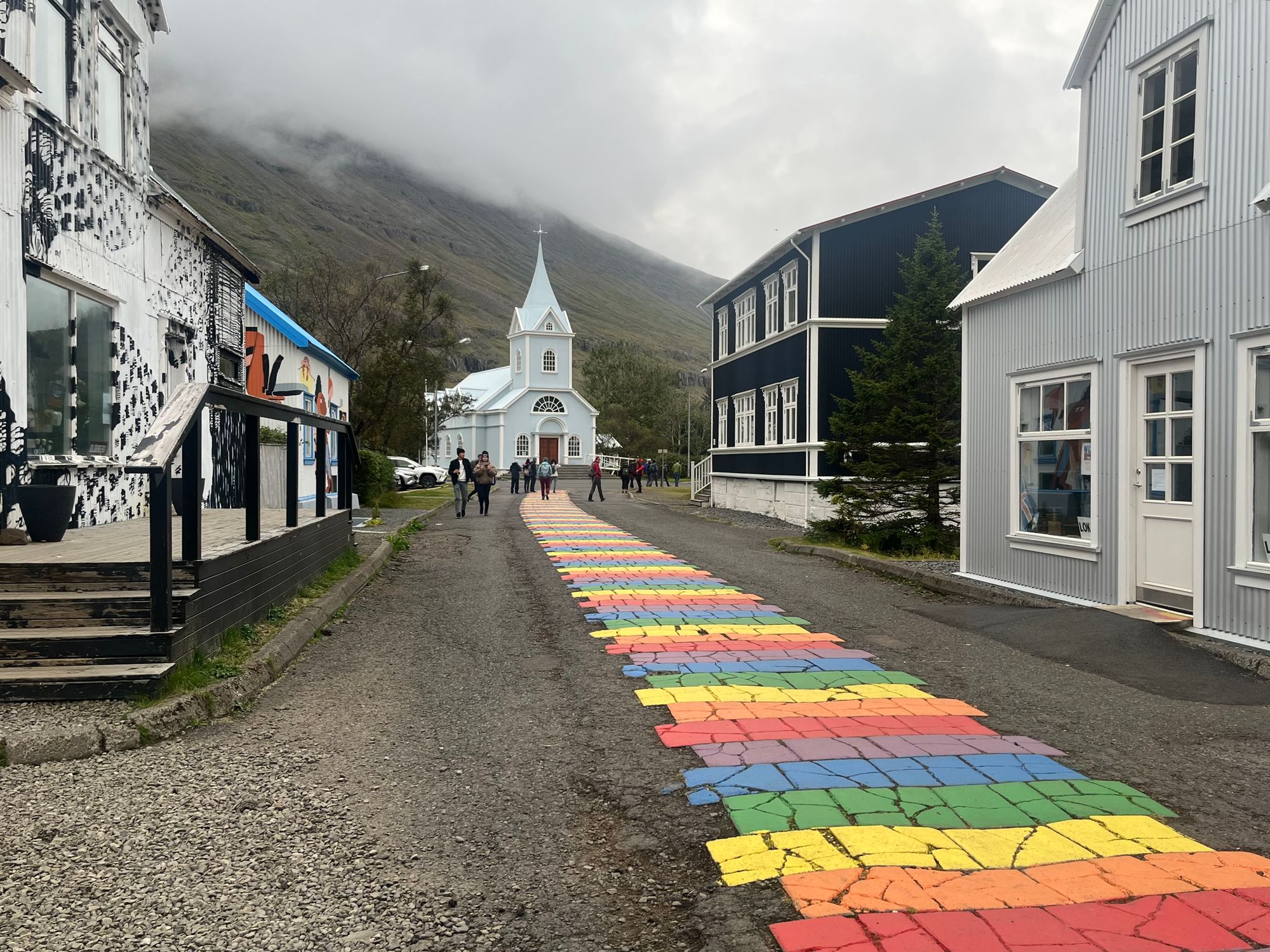
Since the local shops in Iceland don't usually open until 10 in the morning, we let ourselves sleep in a little bit so we could time the peak of our morning hunger with the opening of our local supermarket and café. The gas station situation in Iceland is quite different from that in the US. The gas pump and the attached store are owned by different companies, as if a gas pump is equivalent to having an ATM from some bank outside one's shop. Sometimes gas pumps sit all on their lonesome, but often there is a combination store/café attached. Some cafés are only what they call a "grill" serving hot dogs, hamburgers, pizza, lamb stew, fish and chips and the like (as I said before, these are the Icelandic standards) of varying but usually low quality. (The hot dogs, at least, are consistently exactly what you'd expect of a hot dog.) Others are a cute coffee or ice cream shop, and others are full-on restaurants.
Today we grabbed a breakfast of coffee and skyr from the gas station-attached shop south of Skinnastaðir and said hello to their very friendly old dog. Mom was also very proud of the floral crocheted ear-warmer she bought as a souvenir. After eating, we made the short drive to the Ásbyrgi Canyon Visitor's Center, where we learned about the 3.5km long canyon's origins (Slepnir's footprint, or perhaps catastraphic glacial flooding) and the elves that apparently make their home at the base of the canyon's wall.
We drove into the canyon and took a short walk to Botnstjörn ("Bottom Pond," at the base of the canyon, Icelandic names being unerringly descriptive) through the forest where the Hidden People make their home. The forest seemed exactly like the kind of place elves would have their own concert halls, museums, and other civic buildings, as local children have reported for around a century. The pond was lovely, too, and we spotted a number of local birds and learned something about the local plant-life.
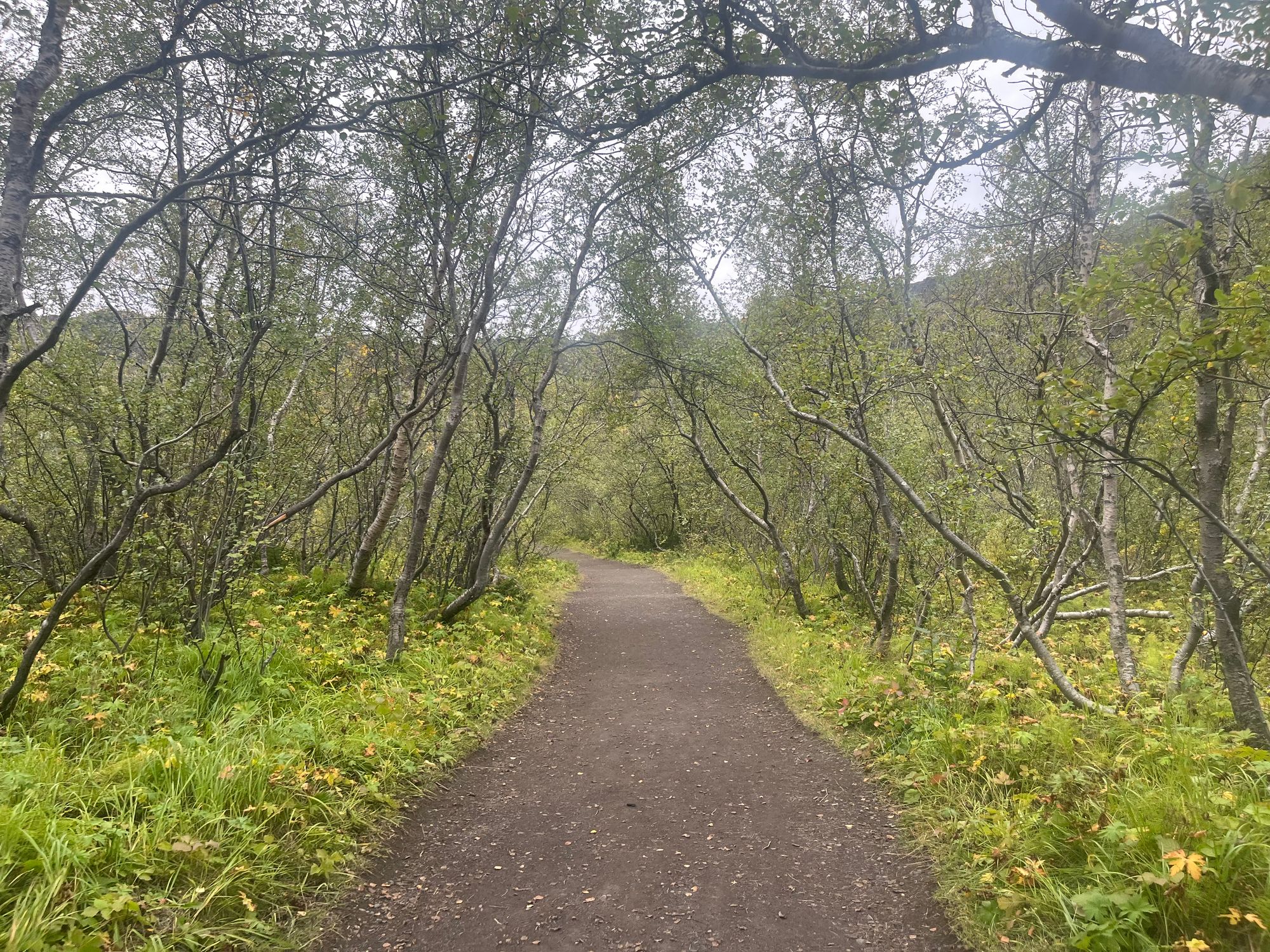
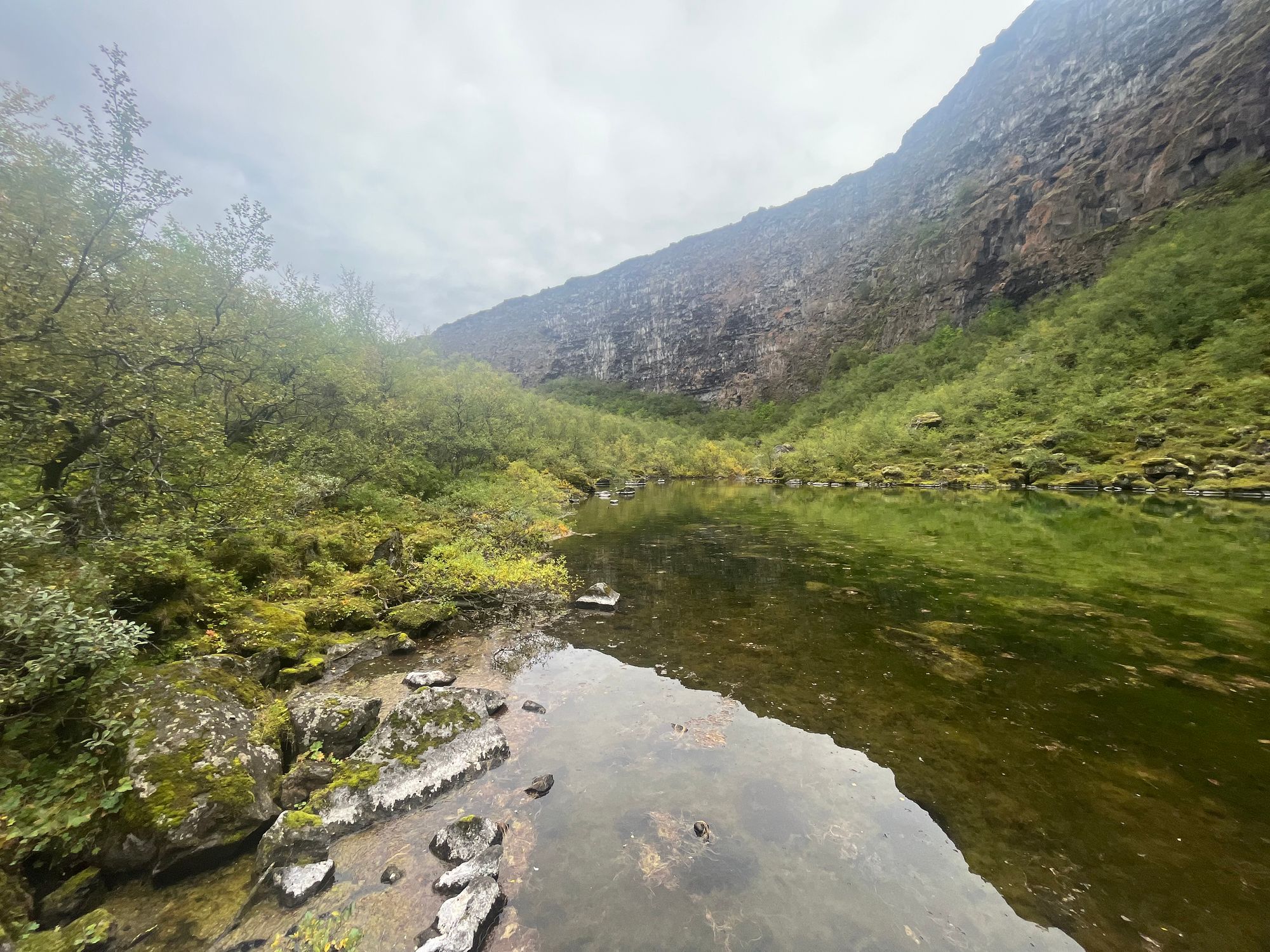
After Ásbyrgi, we moved south in the National Park to the area known as Hlóðaklettar, the "Echo Rocks." At first I wondered at the name, but it soon became clear when we made our way down the path to the banks of the Jökulsá á Fjöllum. The surrounding basalt column formations are perfectly shaped to create an echo of the sound of the fast-flowing glacial run-off. Further along the rocky trail, we found the "Lava Church," another basalt formation that forms a shallow, arched cave. Altogether it was a good 3 to 4km walk, the first "real hike" of our trip.
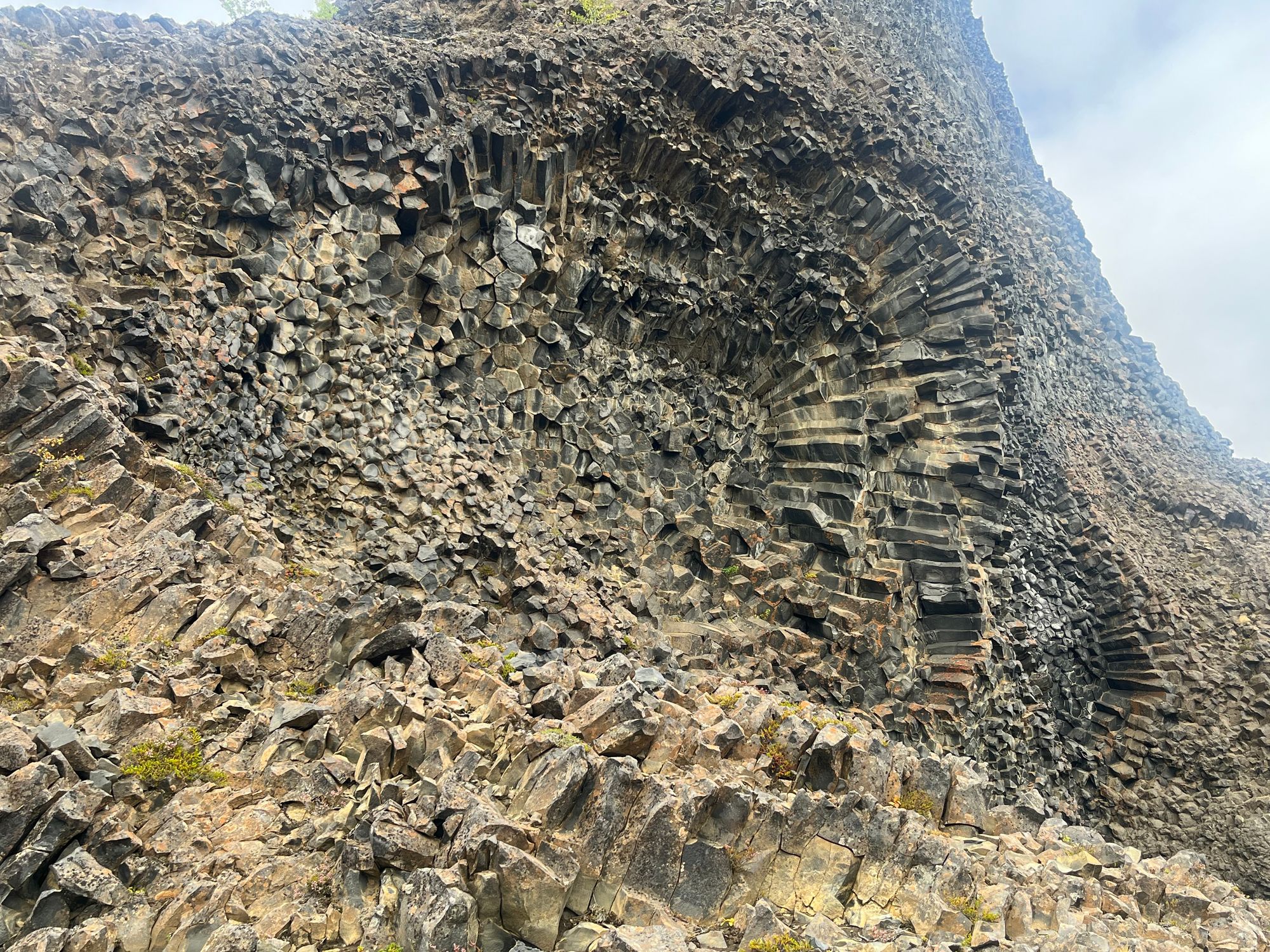
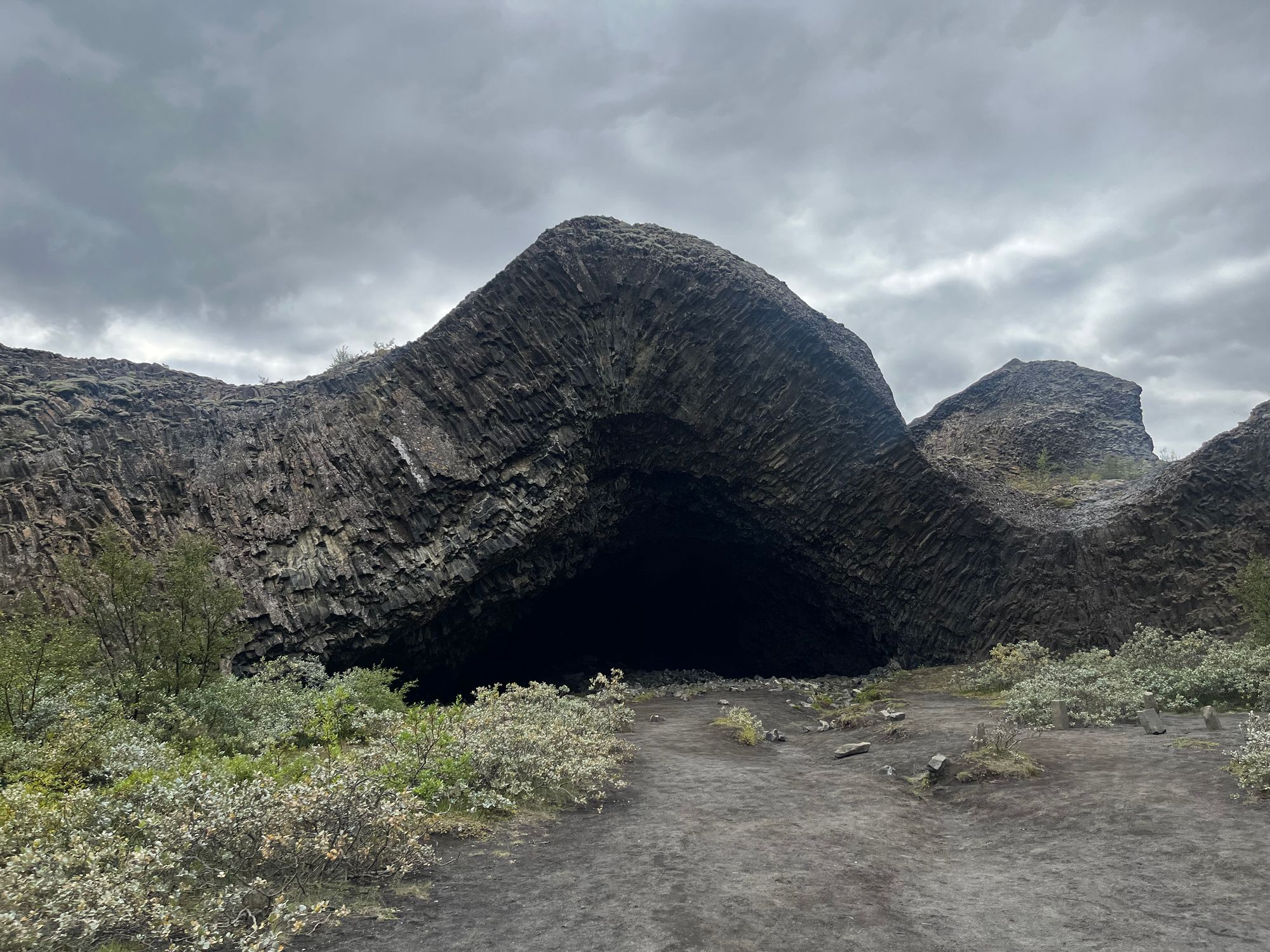
We exited the National Park to the south and headed east into the Icelandic Highland. This area is mostly high desert and inhospitable to human and animal life. I read that this was the area that inspired the novel Independent People by Nobel Prize winner Halldór Laxness, which I now intend to read at some point. High up on this barren plain, close to the "highest farm in Iceland," we grabbed gas and ham and cheese sandwiches to help us on our way.
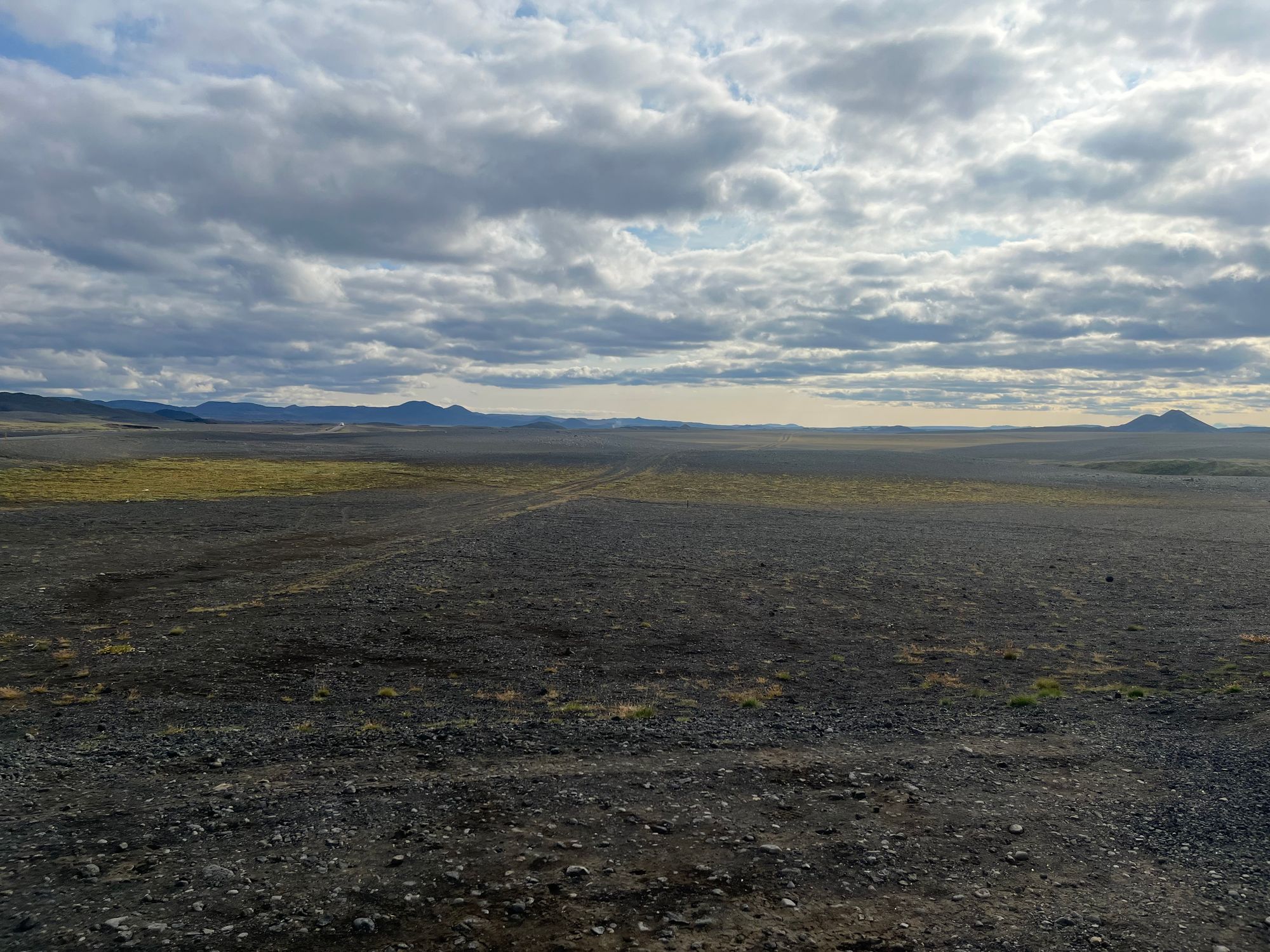
Coming down from the Highland we entered Jökuldalur, the "Glacier Valley," and saw steadily more sheep and eventually real places of human habitation. We passed through the town of Egilsstaðir (not, as far as I could learn, the Egil of the Sagas this time, which is a first) and wound our way over the mountains and down to Seyðisfjörður on the east coast of the country, passing Háifoss ("The High Waterfall" as we went.
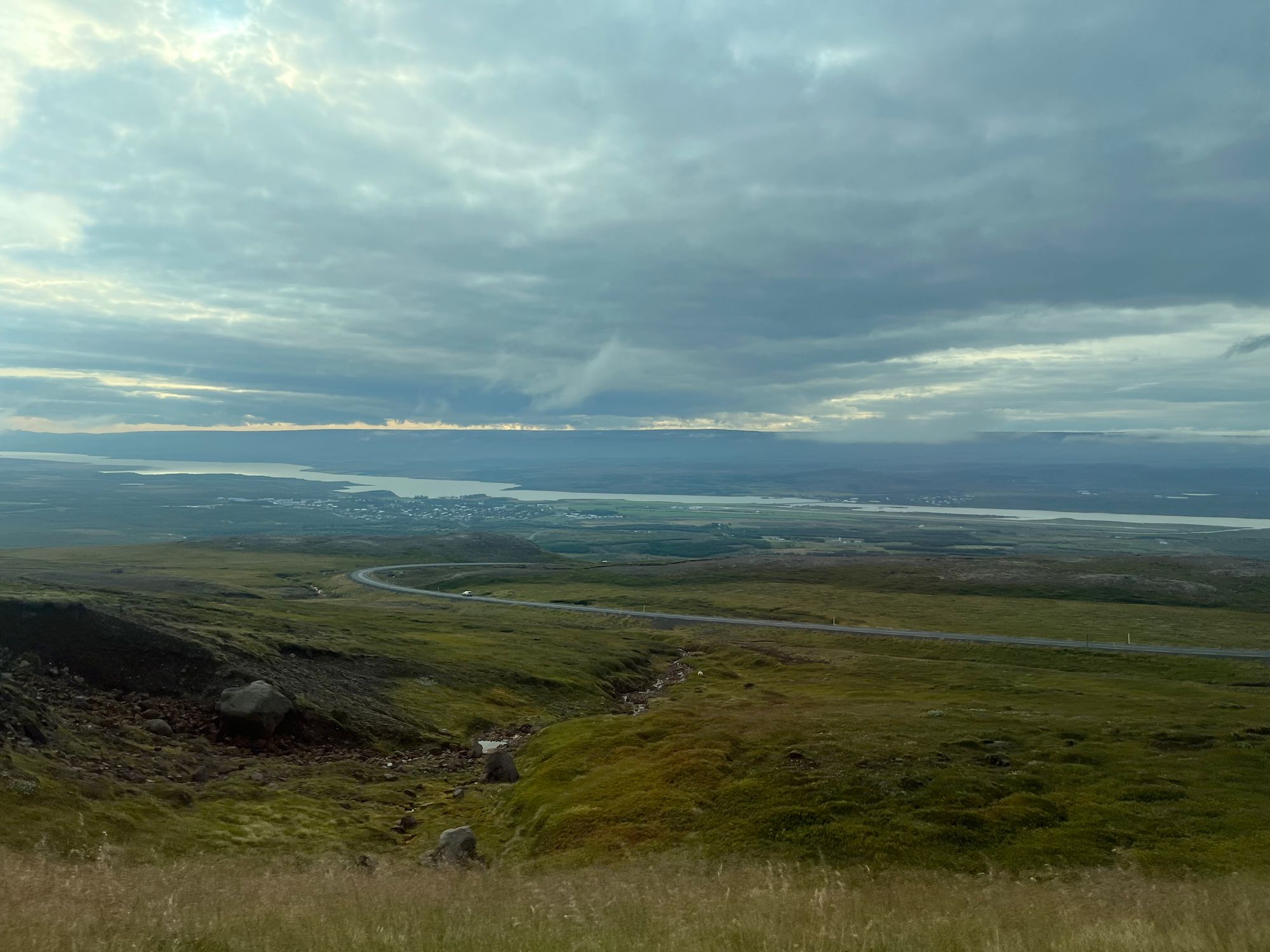
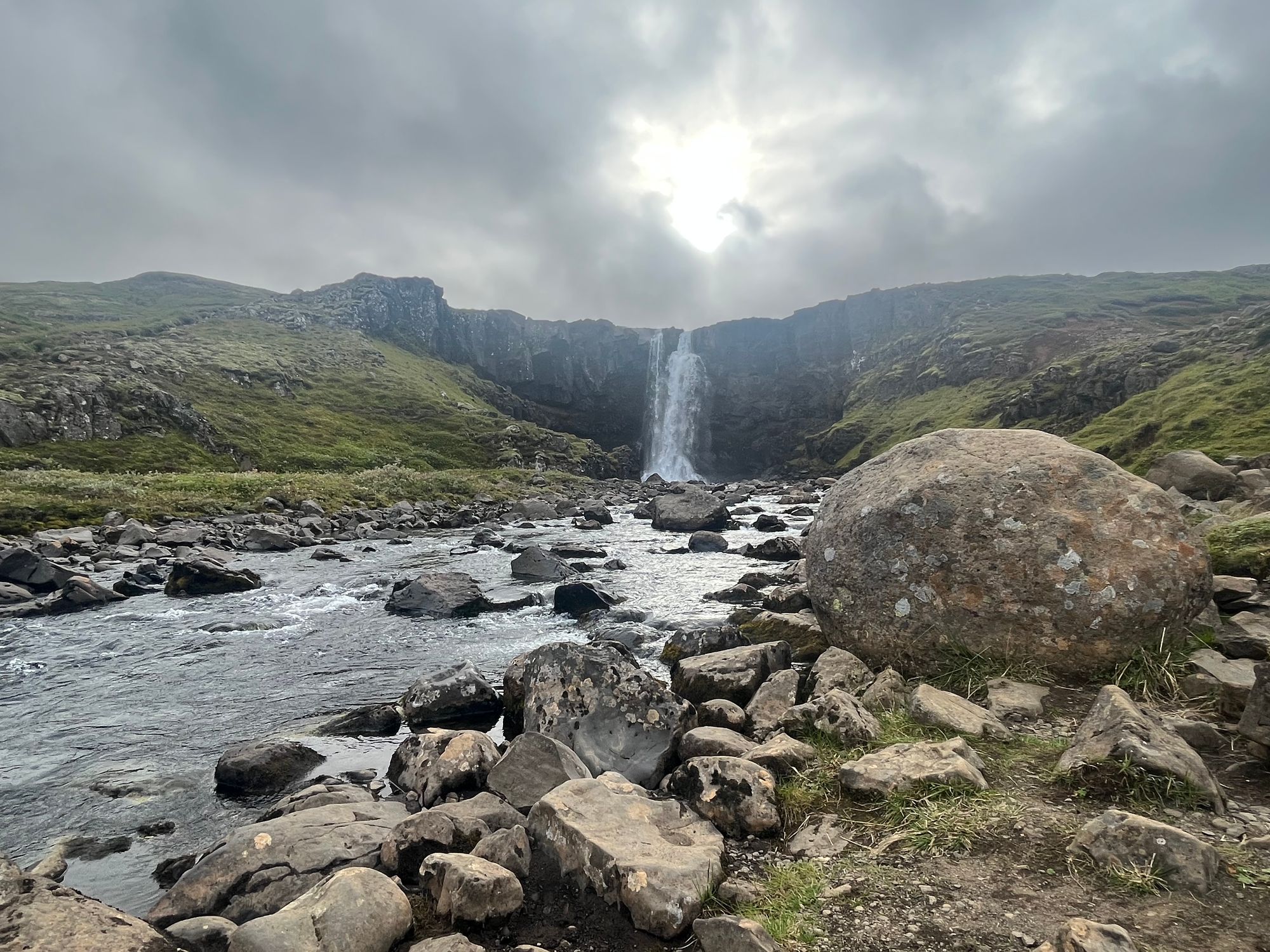
We checked into our hostel, took a nap, and then explored the town a little bit. Seyðisfjörður was the base of Anglo-American operations in Iceland during World War II and is now a hotspot for tourism. This is mainly because the ferry from Denmark via the Faroe Islands arrives and departs from the town's harbor once a week. We arrived on the evening of the ferry's departure and watched the cars and people load up for their three-day journey back to Denmark. We also spotted a cruiseship in the harbor, so I guess there's plenty of business for the many handcraft shops in town on days of the week when the ferry is absent. Unfortunately all of these shops seem to open only in the afternoon and as we arrived in the evening and departed in the morning we were unable to browse their wares.
What we were able to do was walk. We took in the famous Rainbow Street (now updated to include black and brown stripes and a trans pride flag) and Blue Church, as well as an outdoor photo gallery dedicated to remembering the mudslides that tore parts of the town to pieces in December of 2020. Where the mudslides once were, now construction equipment worked to ensure there would not be a repeat performance.
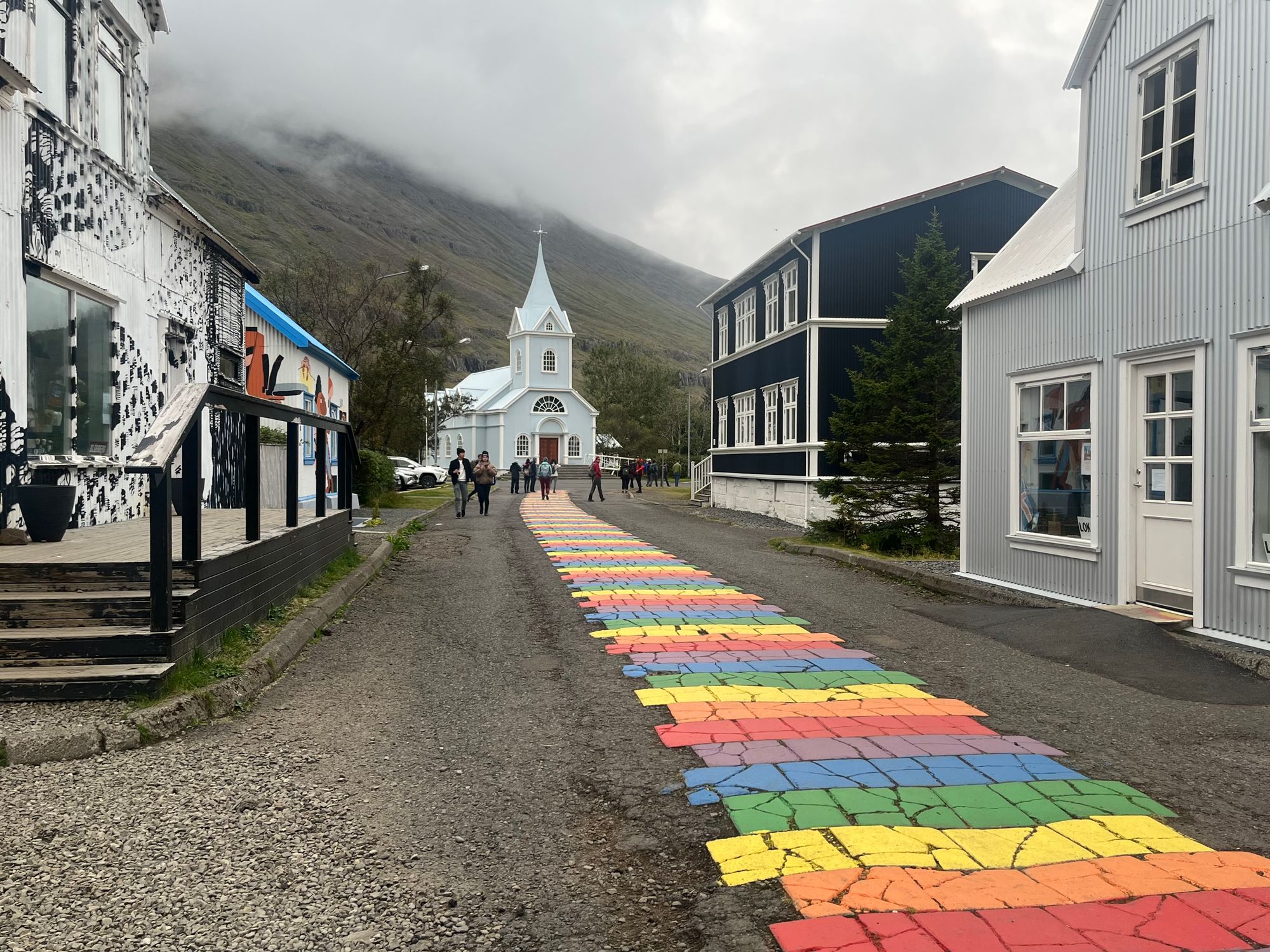
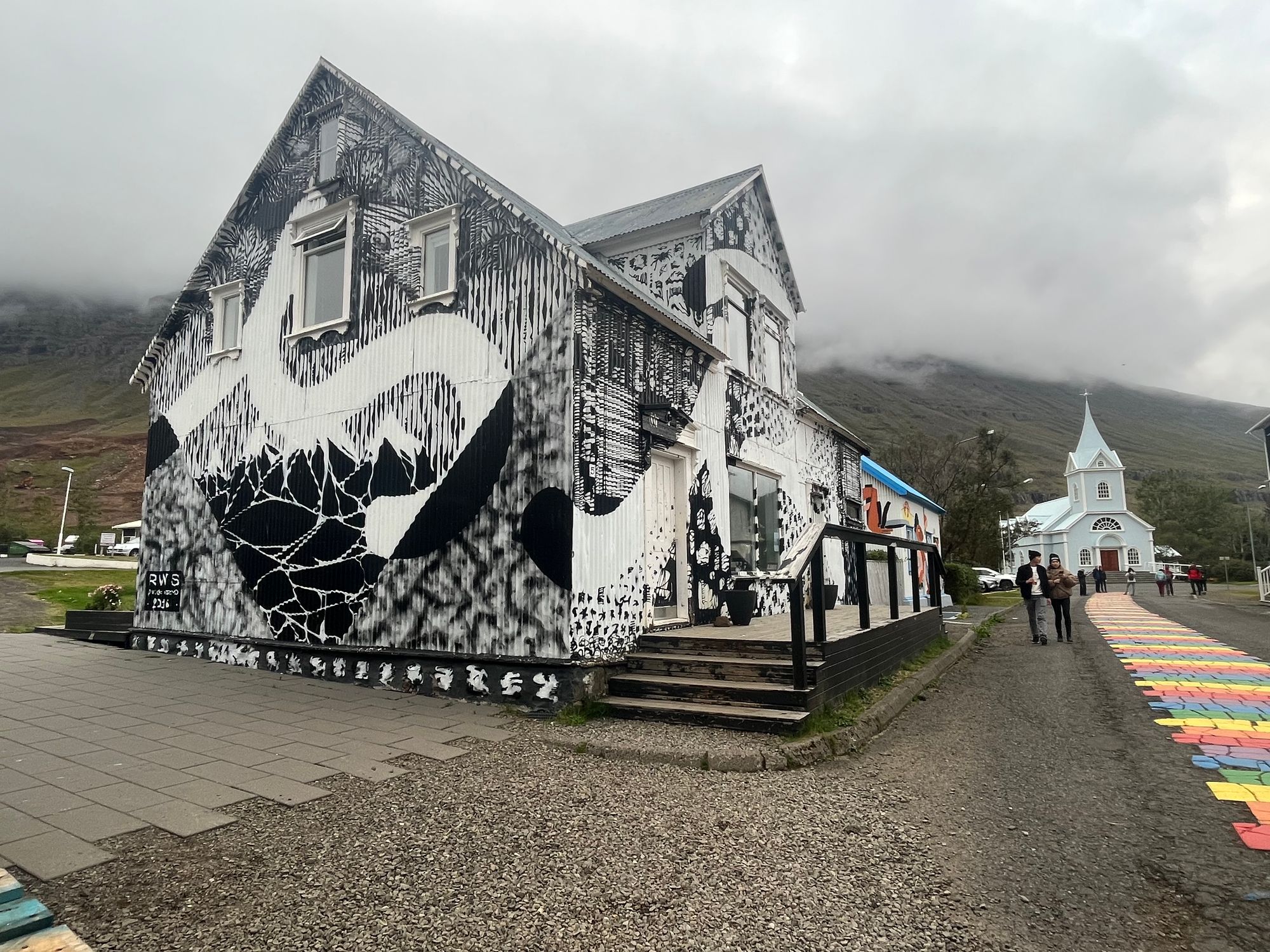
A quick note on LGBTQ+ issues in Iceland: I'm not sure of the situation on the ground, but pride flags are everywhere. We see rainbows all over the place, and while some are likely not meant for Pride, others are unmistakable. Just in Seyðisfjörður, the restaurant where we had dinner had an inclusive pride flag over the door and the community center flew the same, plus Trans Pride and Nonbinary Pride flags. It's very reassuring to think that there exists a part of the world where you can find support anywhere in the country.
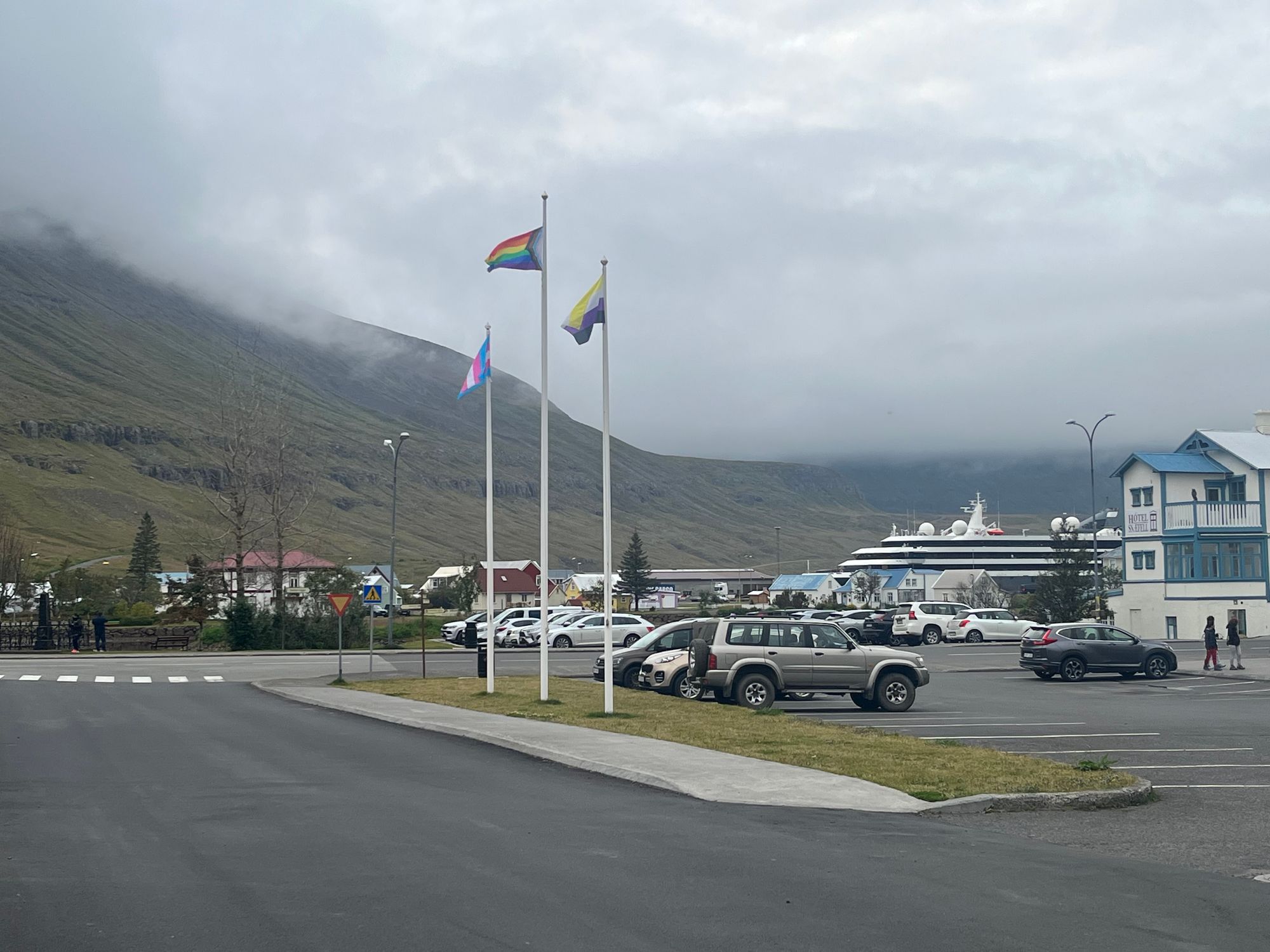
Speaking of dinner, we had a particularly expensive meal at a fancy restaurant. We ordered pepper steak and fish and shared the two, but still ended up with a $100 check. Such is life in Iceland, particularly the touristy parts of the country.
Our hostel was in a former hospital building and had (as many of our accommodations have had) a sauna in the basement. I ended up in the trundle bed, thereby finally living out my Little House in the Big Woods dreams. We had a good sleep to get ready for the next day.